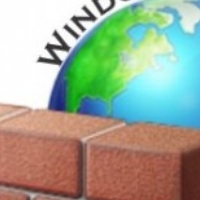
by Dave Hartsock for Daves Computer Tips
One of the killer features of WHS V1 was named Drive Extender. Drive extender technology allowed multiple drives to be added to a computer, but they were viewed by the OS as a pool of storage or one large drive. Drive extender also included the ability to automatically duplicate folders for redundancy through a feature called folder duplication. In WHS V1 if you had two drives, or more, in your computer folder duplication could store two copies of a folder, and the files within, on two separate physical drives. This was done seamlessly and in the background with no user intervention other than enabling the option. Normally a drive failure would result in loss of data, but with Drive Extender and the folder duplication feature the data would be duplicated on a second drive preventing data loss. You could think of this as a poor man’s RAID solution, and many referred to it as such.
Fast forward to 2010… Microsoft announced the second version of WHS, code named Vail (released as Windows Home Server 2011), based on Server 2008 R2 and some new additions to the line targeting small businesses based on the WHS code. Drive Extender was expected to continue to live inside WHS Vail and find its’ way into the new business line with possible inclusion in other Windows versions. Unfortunately, later in 2011, Microsoft announced they experienced issues when using Drive Extender with certain business software. Based on the shared code between WHS and the new small business line they made the decision to drop Drive Extender from WHS completely. The internet uproar among enthusiasts was great. Many complained that Drive Extender was the core reason to run WHS while others stated they would flat out not upgrade to the new WHS without it. I understand Microsoft’s decision and there are other methods to achieve the same end result, but having Drive Extender built into WHS was a simple and straight forward solution for many that was built into the OS.
As a result of Microsoft’s decision and urged on by the internet grumblings regarding the lack of Drive Extender a company named Division-M from Australia began working on their own solution. A solution that would make Windows Home Server “whole” again with the added bonus of not being tied to any one particular Microsoft OS.
Learn More About Drive Bender/Article continued here
This excerpt is shared with permission from davescomputertips.com.




